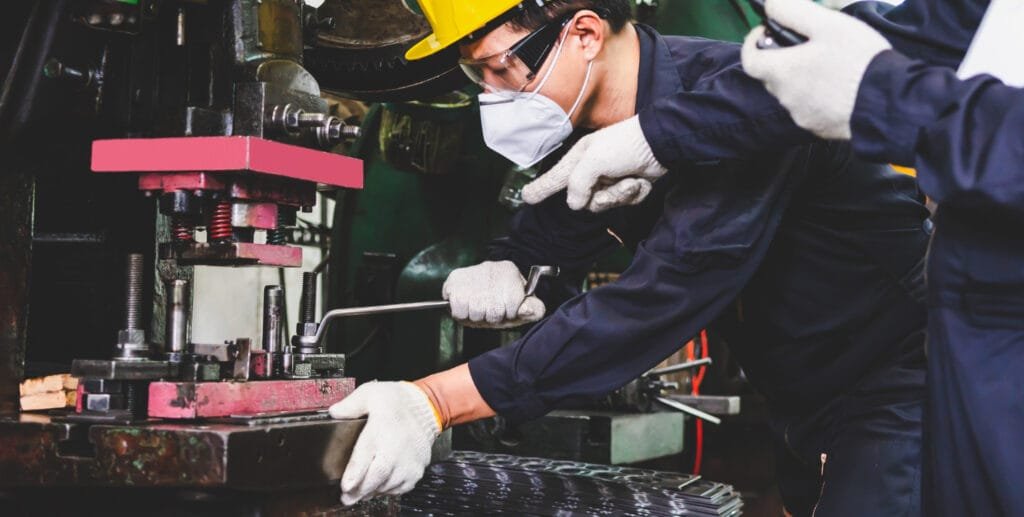Cost-Effective Strategies for Industrial Equipment Repairs
Industrial equipment forms the backbone of manufacturing and production processes across various industries. However, breakdowns and malfunctions are inevitable, necessitating timely repairs to minimize downtime and maintain operational efficiency. Yet, managing repair costs can be challenging, especially for businesses operating on tight budgets. In this article, we delve into cost-effective strategies for industrial equipment repairs, focusing on maximizing efficiency while minimizing expenses.
Prioritize Preventive Maintenance:
Preventive maintenance is a critical component of cost-effective strategies for industrial equipment repairs. By proactively addressing potential issues before they escalate into costly breakdowns, businesses can minimize downtime, reduce repair expenses, and extend the lifespan of their equipment.
Importance of Preventive Maintenance
Preventive maintenance involves regularly scheduled inspections, lubrication, adjustments, and part replacements aimed at preventing equipment failure. This proactive approach helps identify and address minor issues before they escalate, minimizing the risk of unplanned downtime and costly repairs.
Cost Savings
Investing in preventive maintenance can lead to significant cost savings over time. By addressing issues early, businesses can avoid expensive repairs, minimize production losses due to downtime, and extend the lifespan of their equipment. Additionally, preventive maintenance helps optimize equipment performance, reducing energy consumption and maximizing operational efficiency.
Improved Reliability
Regular maintenance helps ensure that industrial equipment operates reliably and consistently. By identifying and addressing potential issues early, businesses can reduce the risk of unexpected breakdowns and production interruptions. This enhances overall productivity and customer satisfaction by ensuring consistent delivery of goods and services.
Enhanced Safety
Regular maintenance not only helps protect equipment but also ensures the safety of workers. Faulty or poorly maintained equipment can pose serious safety risks, leading to accidents, injuries, and even fatalities. Preventive maintenance helps identify and address safety hazards, creating a safer work environment for employees.
Prioritizing preventive maintenance as part of cost-effective strategies for industrial equipment repairs is essential for minimizing downtime, reducing repair expenses, improving reliability, and enhancing safety. By investing in proactive maintenance measures, businesses can optimize equipment performance, reduce costs, and maintain a competitive edge in today’s demanding marketplace.
Invest in Training and Education:
Investing in training and education for cost-effective strategies in industrial equipment repairs is crucial for businesses aiming to optimize maintenance costs while ensuring reliable operations. By providing employees with the necessary skills and knowledge, companies can minimize downtime, reduce repair expenses, and extend the lifespan of their equipment.
Importance of Training and Education
- Enhanced Skills and Expertise: Training programs equip maintenance technicians with the skills and expertise needed to diagnose issues accurately and perform repairs efficiently. Well-trained technicians are better equipped to identify potential problems early on, preventing costly breakdowns and minimizing production disruptions.
- Efficient Troubleshooting: Educated technicians are adept at troubleshooting complex industrial equipment, enabling them to pinpoint root causes of malfunctions quickly. This efficiency translates to reduced downtime and lower repair costs as issues are resolved promptly and effectively.
- Optimal Resource Utilization: Investing in training ensures that maintenance personnel utilize resources effectively, minimizing waste and unnecessary expenditures. Properly trained technicians can perform repairs using the most appropriate tools, techniques, and spare parts, leading to cost savings for the organization.
Implement Condition Monitoring Systems:
Condition monitoring systems (CMS) are invaluable tools for industrial equipment maintenance, providing real-time insights into the health and performance of machinery. Implementing CMS as part of cost-effective repair strategies can help businesses minimize downtime, reduce maintenance costs, and extend the lifespan of critical assets.
Benefits of Condition Monitoring Systems
- Early Detection of Faults: CMS allows for the early detection of equipment faults and abnormalities, enabling proactive maintenance interventions before issues escalate into costly breakdowns. By identifying potential problems in their infancy, businesses can schedule repairs during planned downtime, minimizing disruption to operations.
- Predictive Maintenance Planning: With CMS data providing a clear picture of equipment health and performance trends, businesses can adopt predictive maintenance strategies. By anticipating when components are likely to fail, maintenance tasks can be scheduled strategically, optimizing resources and minimizing the need for emergency repairs.
- Reduced Maintenance Costs: Implementing CMS helps streamline maintenance activities by focusing resources where they are needed most. By prioritizing repairs based on actual equipment condition rather than predefined schedules, businesses can reduce unnecessary maintenance tasks and associated costs.
- Extended Equipment Lifespan: By monitoring equipment condition continuously and addressing issues promptly, CMS helps extend the lifespan of industrial assets. Proactively managing equipment health can prevent premature wear and deterioration, maximizing the return on investment in critical machinery.
- Embrace Predictive Maintenance: Predictive maintenance takes condition monitoring a step further by leveraging predictive analytics and machine learning algorithms to forecast equipment failures with greater accuracy. By analyzing historical data and identifying patterns, predictive maintenance algorithms can predict when specific components are likely to fail, allowing for timely interventions. This proactive approach minimizes downtime, reduces repair costs, and optimizes the use of maintenance resources.
Leveraging Technology for Remote Diagnostics
In today’s industrial landscape, the efficient repair and maintenance of equipment are crucial for minimizing downtime and maximizing productivity. With the advancement of technology, remote diagnostics has emerged as a cost-effective strategy for diagnosing and troubleshooting issues in industrial equipment without the need for on-site visits by technicians.
Importance of Remote Diagnostics
Remote diagnostics allow for real-time monitoring and analysis of equipment performance, enabling early detection of potential issues before they escalate into major problems. This proactive approach helps to prevent unexpected breakdowns and costly repairs, ultimately improving overall equipment reliability and uptime.
Utilizing IoT and Sensor Technology
The Internet of Things (IoT) and sensor technology play a key role in remote diagnostics by providing continuous data collection from industrial equipment. These sensors monitor various parameters such as temperature, pressure, vibration, and fluid levels, transmitting this data to a centralized platform for analysis.
Implementing Predictive Analytics
By harnessing the power of predictive analytics, manufacturers can leverage historical data and machine learning algorithms to identify patterns and trends indicative of potential equipment failures. This enables proactive maintenance scheduling and targeted repairs, optimizing resources and minimizing downtime.
Remote Troubleshooting and Support
Remote diagnostics also facilitate remote troubleshooting and support, allowing technicians to access equipment data and diagnostics remotely. Through video conferencing and augmented reality technologies, experts can guide on-site personnel through repair procedures, reducing the need for costly travel and minimizing repair time.
Effective Spare Parts Management:
Effective spare parts management is crucial for minimizing downtime and controlling costs in industrial equipment repairs. By implementing cost-effective strategies, businesses can ensure that they have the necessary spare parts on hand to quickly address equipment failures and maintain operational efficiency.
Inventory Optimization
One key aspect of cost-effective spare parts management is inventory optimization. This involves identifying critical spare parts based on factors such as equipment reliability, lead times, and historical usage data. By prioritizing the stocking of high-demand items and reducing excess inventory of low-value parts, companies can minimize carrying costs while ensuring availability when needed.

Vendor Relationships
Building strong relationships with reliable vendors is another important strategy for cost-effective spare parts management. By partnering with suppliers who offer competitive pricing, timely delivery, and quality assurance, businesses can secure favorable terms and minimize the risk of supply chain disruptions. Additionally, negotiating long-term contracts or volume discounts can further reduce procurement costs.
Predictive Maintenance
Implementing predictive maintenance techniques can also help optimize spare parts management. By leveraging sensor data, analytics, and predictive algorithms, companies can anticipate equipment failures before they occur and proactively replace parts as needed. This not only reduces the likelihood of unplanned downtime but also ensures that spare parts are utilized efficiently, minimizing waste and excess inventory.
Standardization and Interchangeability
Standardizing equipment components and promoting interchangeability can streamline spare parts management and reduce costs. By using interchangeable parts across different equipment models or manufacturing lines, businesses can consolidate their spare parts inventory and simplify procurement and maintenance processes. Additionally, standardization facilitates bulk purchasing and reduces the need for specialized training and documentation.
Optimizing spare parts management through inventory optimization, vendor relationships, predictive maintenance, and standardization is essential for controlling costs and ensuring operational resilience in industrial equipment repairs. By adopting these cost-effective strategies, businesses can enhance efficiency, minimize downtime, and maintain a competitive edge in today’s dynamic marketplace.
Consider Refurbishment and Retrofitting:
Refurbishment and retrofitting are integral components of cost-effective strategies for industrial equipment repairs. In the dynamic landscape of industrial operations, maintaining equipment efficiency while managing costs is paramount. This article delves into the significance of refurbishment and retrofitting, highlighting their role in prolonging equipment lifespan and enhancing operational efficiency.
Refurbishment: Renewing Equipment for Extended Use
Refurbishment involves restoring equipment to its original condition or upgrading it to meet modern standards. This process includes repairing or replacing worn-out components, performing preventive maintenance, and implementing technological advancements to enhance performance. Refurbishment not only extends the lifespan of equipment but also improves reliability and reduces the risk of unexpected breakdowns.
Retrofitting: Upgrading Equipment for Enhanced Performance
Retrofitting focuses on integrating new technologies or features into existing equipment to improve functionality and efficiency. This may include installing energy-efficient components, implementing automation systems, or upgrading control systems to enhance precision and accuracy. Retrofitting enables businesses to leverage advancements in technology without the need for complete equipment replacement, thereby reducing costs and minimizing downtime.
Track and Analyze Repair Data:
Maintaining comprehensive records of equipment repairs and maintenance activities enables businesses to identify trends, patterns, and recurring issues. By analyzing repair data, businesses can pinpoint underlying causes of equipment failures and implement corrective measures to prevent future occurrences. Additionally, tracking repair costs and performance metrics allows for better budgeting, resource allocation, and decision-making regarding equipment maintenance and replacement.
Effective management of repair data is crucial for implementing cost-effective strategies in industrial equipment maintenance. By tracking and analyzing repair data, businesses can identify trends, anticipate maintenance needs, and optimize repair processes to minimize downtime and costs.
Tracking Repair Data
Tracking repair data involves systematically recording information related to equipment failures, repairs, and maintenance activities. This includes details such as the type of equipment, date and time of failure, nature of the issue, parts replaced, repair duration, and associated costs. Utilizing digital tools like maintenance management software can streamline data collection and facilitate easy retrieval and analysis.
Analyzing Repair Data
Analyzing repair data involves identifying patterns, correlations, and insights to inform decision-making and improve maintenance strategies. By analyzing historical repair data, businesses can identify recurring issues, root causes of failures, and opportunities for preventive maintenance. This allows for proactive interventions to address potential problems before they escalate, minimizing downtime and reducing repair costs.
Conclusion:
Effectively managing industrial equipment repairs is essential for maintaining productivity, minimizing downtime, and controlling operational costs. By implementing cost-effective strategies such as preventive maintenance, predictive analytics, remote diagnostics, and strategic partnerships, businesses can optimize equipment performance while reducing repair expenses. Embracing technological advancements, investing in training and education, and prioritizing data-driven decision-making are key pillars of successful equipment repair management. By adopting a proactive and holistic approach to maintenance and repair, businesses can achieve long-term sustainability and competitiveness in today’s dynamic industrial landscape.




